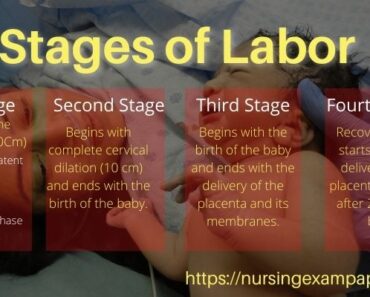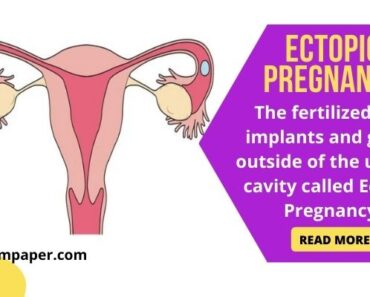What is the placenta – The Placenta is a temporary fetal organ that develops inside the uterus during pregnancy. It begins in the 6th week of pregnancy and is completed in the 12th week of pregnancy. The Functions of placenta are to provide oxygen and nutrition to the fetus and to remove waste products from the baby’s blood. It attaches to the wall of the uterus and fetus through the umbilical cord. Most of the pregnancy Placenta attach to the top side of the uterus. Placenta provides many hormones that are needed in pregnancy like estrogen, progesterone, and lactogen, etc. The placenta develops lower side in the womb but moves to the upper side as the uterus stretches.

Shape and anatomy
Shape- The human placenta is discoid because in term it has almost a circular disc shape with a diameter of 15- 20 CM and thickness of 8cm at the center, it thin off towards the edges.
Placenta feels spongy and its weight is almost 500gm.
Anatomy- Placenta develops from two-component, a first fetal component which is the chorion frondosum, and a second mother component which is decidua basalis.
The surface of the placenta
Placenta has two surfaces. 1. Fetal surface, 2. Maternal surface, and a peripheral margin.
Fetal surface- it is covered by smooth and glistening amnion and attached with an umbilical cord near its center.
Maternal surface- the maternal surface has a dull red color and it feels rough and spongy.
Types of placenta
The placenta takes a form in which it comprises several distinct parts. which are connected by blood vessels this part is called the lobes. And numbers of lobes maybe two, three, four, and more. According to the number of lobes, the placenta is called as –
Bilobed/Bilobular – has two lobes.
Tripartite/ Trilobular – has three lobes.
Circulation of placenta
The placenta is a vascular organ, receiving its blood supply from the maternal and fetal circulatory systems, so the placenta has two circulatory systems for its blood supply.
Utro placental/maternal placental- Utero placental circulation is concerned with the maternal blood flowing into the intervillous space through decidual spiral arteries.
Maternal blood flow approximately -500/600ml/mint.
Fetoplacental circulation- fetal placental circulation permits the umbilical arteries to carry deoxygenated and nutrient-depleted fetal blood from the fetus. fetal blood flow approximately 400 ml/mint.
Functions of placenta
The placenta transfer oxygen, nutrients, and waste products between mother and fetus. So placenta does these following functions:
- Respiratory
- Excretory
- Nutritive
The placenta work as an endocrine gland and its secret hormones that are needed in pregnancy.
Barrier functions- The placental barrier is the partition between mother and fetal calculation. it protects the fetus from being affected by harmful substances in the mother’s blood circulation.
Immunological Functions of the placenta – The placenta performs an important function by transferring maternal IgG, and filters out cytotoxic antibodies potentially harmful to the fetus.
Placental abnormalities
Placental abnormality is classified according to its structure. Due to the abnormal structure, the fetus does not get proper nutrition. Due to which the development of the embryo gets blocked. And there are also other pregnancy problems like abortion, preterm delivery, and IUD. This abnormality is as follows:
Placenta succenturiate
Placenta succenturiate is a morphological abnormality of the placenta. Where one or more lobes are present outside the placenta. These can be of different sizes(size of a cotyledon) may be placed at varying distances, and are connected by blood vessels to the main placenta.
If there is no connection of blood vessels between the small lobes (a mass of placental tissue) that separate from the main placenta, it is called placenta spuria.
Circumvallate placenta
The surface of the embryo is divided into a central depressed area surrounded by a thick white ring that is incomplete. The ring is located at varying distances from the margin of the placenta. The ring consists of a double layer of amnion and chorion with degenerated decidua vera and fibrin in between. Vessels emerge from the cord insertion into the ring and then disappear from view. About 1% of pregnancies have a complete circumvallate placenta. and its also known as placenta extrachorialis. (ref- Wikipedia)
Placenta marginata
A thin fibrous ring is present at the margin of the chronic plate where the fetal vessels appear to terminate.
Placenta membranacea
Placenta membranacea is a rare placental disorder characterized by the presence of fetal membranes (in whole or in part) covered by chorionic villi. Because chorion fails to differentiate between chorion laeve and chorion frondosum.
Placental complications
Complications are divided based on its implantation and function, usually involving the upper (fundal) region of the uterus. But sometimes it is implanted in the lower part of the uterus near the OS which is called Previa. And apart from this, it is also divided according to the depth of implantation which is called accreta, increta, or percreta, etc. some of these are given below-
Placenta previa
insufficiency
placental abruption
placenta accreta
retained placenta
Read also-
Bones of Lower Limb, anatomy of extremity bones
AIIMS NORCET Mock Test Paper 1







